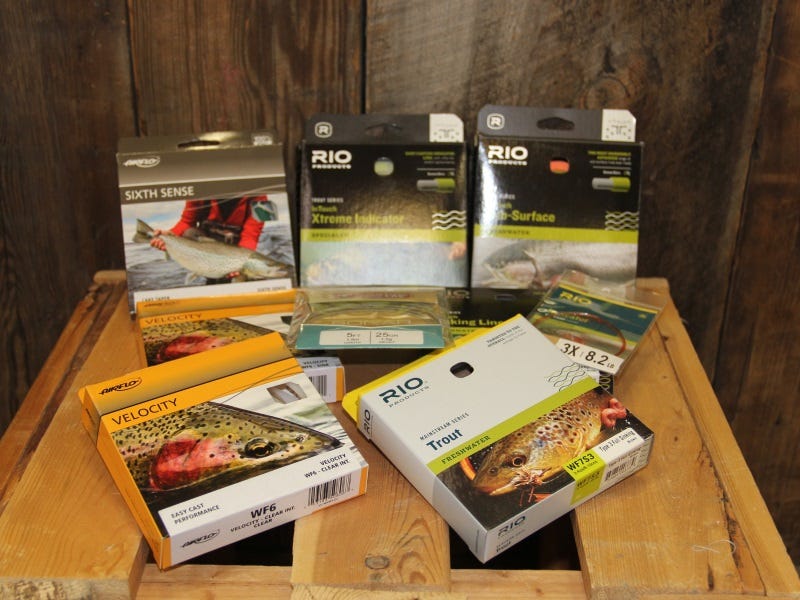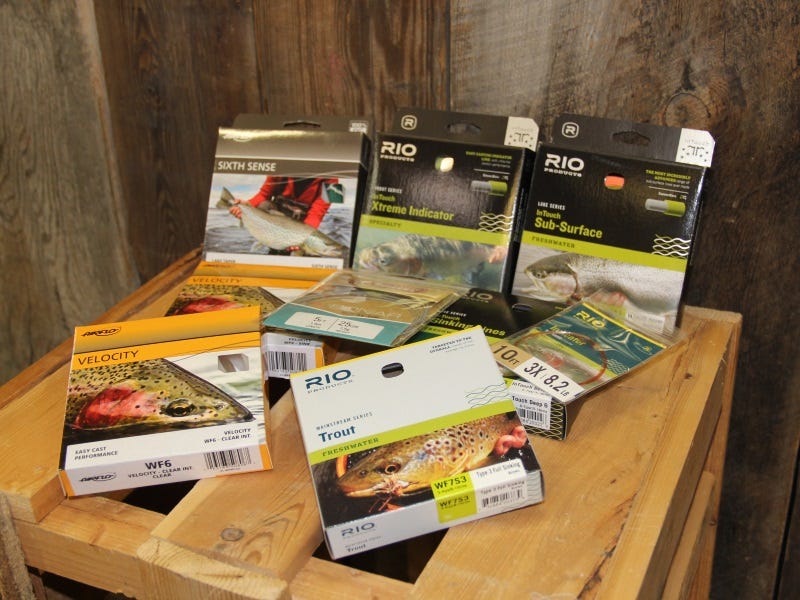The Three Fly Lines You Must-Have To Fish Washington’s Lakes


The most important companion to a quality rod is the correct line. In the case of stillwater fly fishing it is the correct lines. That's because lake fisheries are ever-changing an anglers must be adaptive. The best way to cover a range of hatches and fishing methods and depths is with a diverse line selection.
During a presentation titled, “Stillwater Success,” expert lake fisherman Phil Rowley said, “It’s not uncommon for a competitor to take 40 lines to the water” when fishing competitively in Britain. Not that it takes 40 lines to be a success stillwater angler in Washington, but having enough line to adapt to changing conditions increases the odds of finding fish on any given day.
In common “gear” fishing, depth is most often achieved through some type of concentrated weight. This does two things—it carries line out during the cast and helps achieve depth (for the purists I know this is a generalization and the floating ShadRap and other lures don’t follow the weight-for-depth argument). This is the distinct difference between fly-fishing and conventional fishing. In fly fishing the line carries the fly and in conventional fishing the lure carries the line. Since the line is what propels the fly and the fly is relatively light we must find a way to get the fly down to the fish in various points in the water column. Thus we use weighted lines to control the sinking of the fly.
Sinking lines are imperative to fish lakes effectively. Each is classified by its sink-rate. The rate at which lines sink is generally calculated and differentiated in inches per second, i.e., a Type 3 line sinks at three inches per second (IPS). A Type 6 sinks at a rate of six IPS, etc. With every rule there are exceptions. “Hover” and “Intermediate” lines sink just below the surface and stay there. All quality line manufacturers announce a specific sink rate on the box the line comes in so it is good to read and even keep the packaging for reference.
The basis of any good stillwater line kit should encompass the following lines—weight-forward floating, camouflage intermediate, Type 3, and Type 6. If we were to go one step further the inclusion of subtly sinking sink-tip line, such as a midge-tip deserves honorable mention.

Weight-forward Fly Lines for Stillwater
The first line I would buy to fish lakes would be a quality weight-forward floating line with a large tip diameter, which is most common in indicator and streamer lines. Our shop favorites include the Airflo Galloup Indicator line with its “Power Tip” polyurethane material, and the Rio Extreme Indicator. These lines also incorporate braided cores, which limit stretch for better strike detection (when used without an indicator) and tend to hold up better. These heavy front tapered lines allow two different strategies, the first being to fish suspended flies under and indicator. Doing so allows you to fish a known depth with precision, much like the sunfish days of old with a cane pole, float and worm. This is an amazing technique to present a balanced fly to trout, to crappies, to perch and so on. A wide diameter floating line also allows you to cast large streamer patterns into shallow water, stripping them back to shore or to a boat or float-tube. When doing so with a sinking line, anglers often hook up on bottom. This is a chosen method when fish are cruising the shore in search of minnows and leaches. The fat front taper isn’t designed to be a gentle presenter, but carries and turns over weight and large rigs effectively. Just because it stakes its claim as an “indicator” line doesn’t mean it won’t perform well without one.
Type 3 Fly Lines for Stillwater Fishing
The second line to add to your “line up” is a Type 3. This line gives you the ability to sink a fly in the water column and control its depth; our favorite lines are the Airflo Sixth Sense Type 3, the Rio Intouch Deep 3, and the Scientific Anglers Sonar Titan Sink 3. I prefer fishing sink rates in increments of three inches. This is simply because increments of three inches fit nicely into a foot. Using a four-second count on a Type 3 line gives us a foot, and if we are privileged enough to have a fish-finder and mark fish, this reasoning can be extremely helpful.
For instance, let’s suppose we mark fish at 10 feet and we are using a Type 3 line. Ten feet X four seconds per foot = 40 seconds to the fish. It’s not that this can’t be done with other sink rates that don’t fall in multiples of three, but for me it’s just easier to do the math.
One of the best times to fish a Type 3 line is when fish are holding off shoals in a transition line somewhere around 5-10 feet deep. Light to non-weighted flies present very well here; it is important to find a rate of retrieval that works for your pursuit. If the first cast doesn’t yield, change the rate or way you bring your fly back to you. Too often an angler will cast out and rip the fly back like it a competitive bass tournament, which is generally the last thing to do. Start your retrieves slowly. Think about the way fish would see the real version of your fly and mimic that. Think about a song tempo and hum it back to yourself. Remember the fly is not in a race with the fish to get back to the boat or shore.
Intermediate Lines for Stillwater
The third line you need is a camo intermediate. These come in real handy in the spring and falls seasons when the water is cool and clear. During these times the fish can be line-shy while feeding in the upper portions of the water column. Casting a florescent line that shines like crime scene tape dooms your efforts. To combat line shine, fish the stealthy clear camo intermediate lines. Our shop favorite has become the Airflo Sixth Sense Camo Intermediate, with the Rio Camolux sitting in close second. The Airflo Sixth Sense Camo has two distinct attributes to edge the competition. First, the line feels very supple. Second, the taper allows this line to land softly at any distance. This is a great line when working the top thereto six feet of the water column with various flies, including boatmen, mayfly nymphs, and damsel nymphs. It’s probably the best go-to searching line out there.
Type 6 Fly Lines
Lastly, you’ll need a Type 6 deep sinking line. When things need to get down and dirty, a fast-sinking line is a must-have. Large fish are shy, and the largest detest light. That means they rarely swim in the shallows. So, when you really need a fight with Mr. Big, you’ll need to get down. Rio’s Intouch Deep 6 is the shop favorite for doing just that—it sinks a foot in two seconds. Airflo and Scientific Anglers also make fast-sinking lines it the Type 7 variety, which drop a lot in 1.7143. Any of these are good for targeting the bottom portion of the water column and necessary for making tight-line presentations with chironomids or vertical balanced leeches.
With the advent of Scientific Anglers’ “Booby Tip” the fast-sinking line has been made into a hugely versatile tool. The “Booby Tip” allows anglers to suspended an unweighted or floating streamer off the bottom and illicit a downward type jigging action with fast, short strips. This is wickedly effective since the diving action of the fly comes on a tight line and the takes can be crushing. This has made fly fishing for walleye surgical. Even when the bight is slow for the gear angler the “booby” presentation has been proven irresistible.
When it comes down to it, you could get away with one line to fish any of Washington’s best stillwaters but you wouldn’t be happy for very long. In the end, fish in lakes and reservoirs are temperamental and change locations, both vertically and horizontally, all day long. Depending on the season, the hatch, the water temperature and the barometric pressure, you may favor one line over another. Get the floating line to cover dry fly fishing and fishing with an indicator. Get the Type 3 to drop down a little when needed, or to fish weighted flies in shallow water (i.e., when fishing from shore). Get the deep-sinking Type 6 or 7 when the fish are feeding deep, on chironomids, leeches and various nymphs. Adding all to your stillwater quiver means you can take fish in most situations, and that, of course, is every angler’s end goal.
